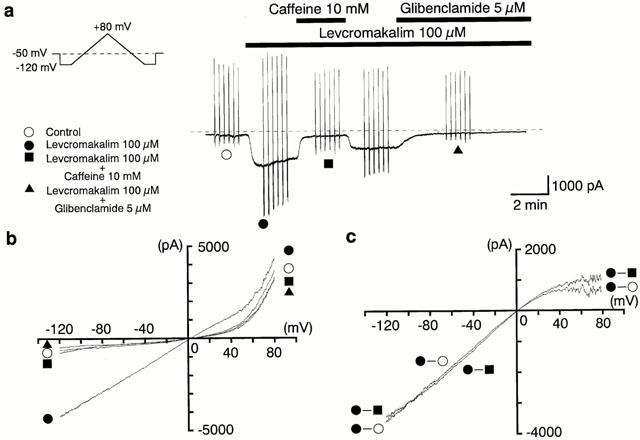Figure 1.

Inhibitory effects of caffeine on the levcromakalim-induced glibenclamide-sensitive inward membrane current at −50 mV. Whole-cell recording, bath solution 140 mM K+ PSS, pipette solution 140 mM K+ containing 5 mM EGTA. (a) Current trace. The vertical lines are responses to triangular ramp potential pulses of 200 mV s−1 from −120 mV to +80 mV, applied after an initial 300 ms conditioning pulse to −120 mV (see inset). Levcromakalim (100 μM) caused an inward membrane current (peak amplitude about 1.8 nA) which gradually decayed. The current was inhibited by application of 10 mM caffeine, recovered to a steady state amplitude, and was then suppressed to the same level by 5 μM glibenclamide. The dashed line indicates zero current. (b) I–V curves measured from the negative-going limb (the falling phase) of the ramp pulse. Each symbol is the same as in the current trace (a). The lines are mean membrane currents from the six ramps in each condition. (c) Net membrane currents. The levcromakalim-induced membrane current was obtained by subtraction of the mean ramp current recorded before from that during application of 100 μM levcromakalim. The caffeine-sensitive membrane current was obtained by subtraction of the membrane currents in the absence and presence of 10 mM caffeine when 100 μM levcromakalim was present in the bath solution.
